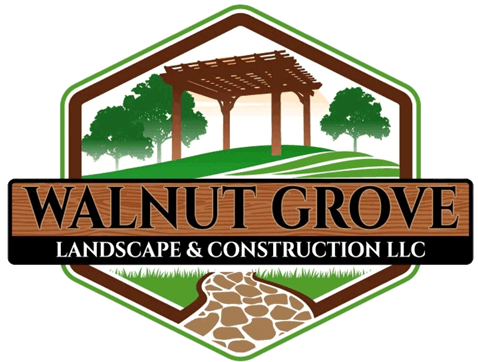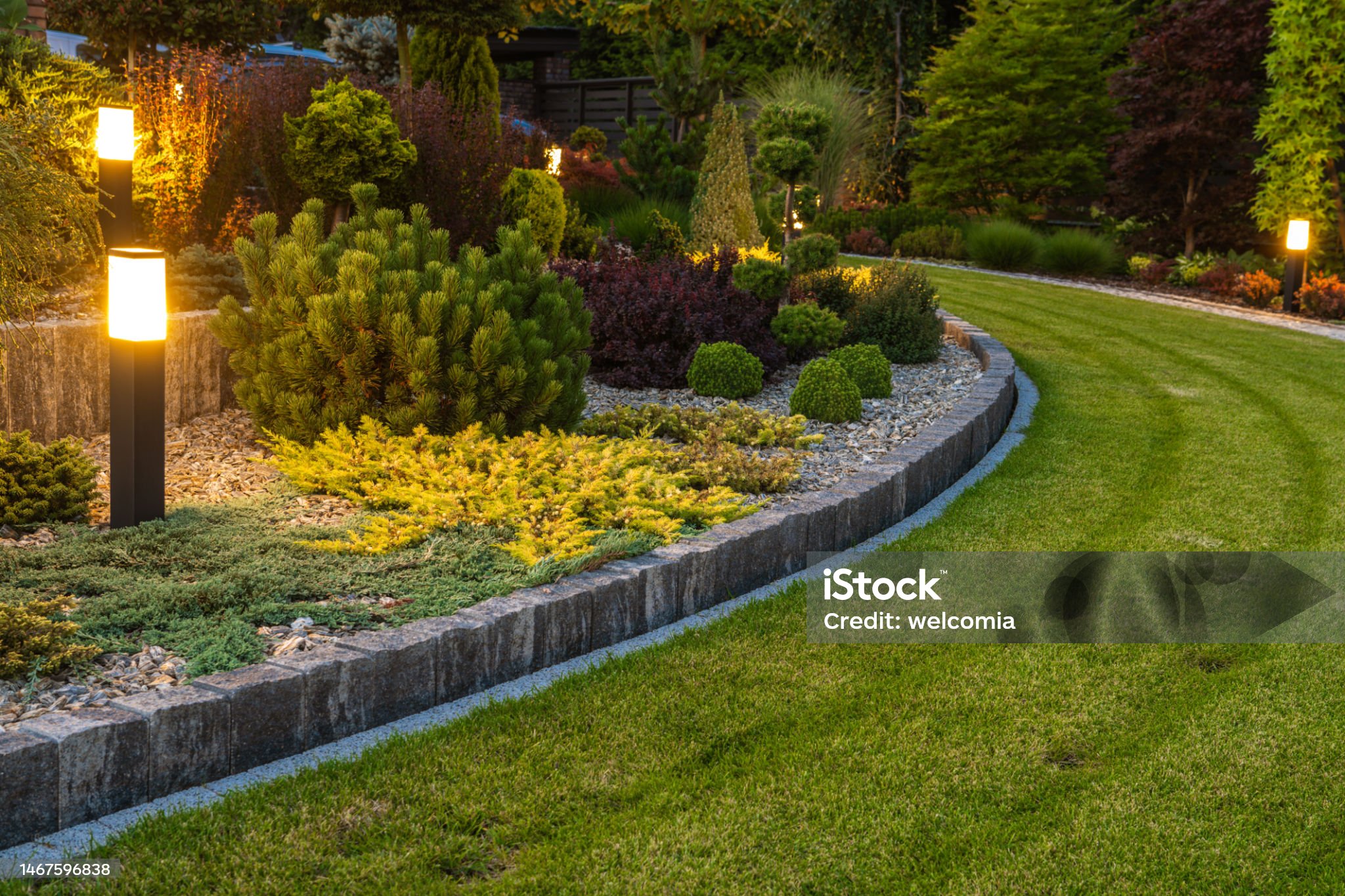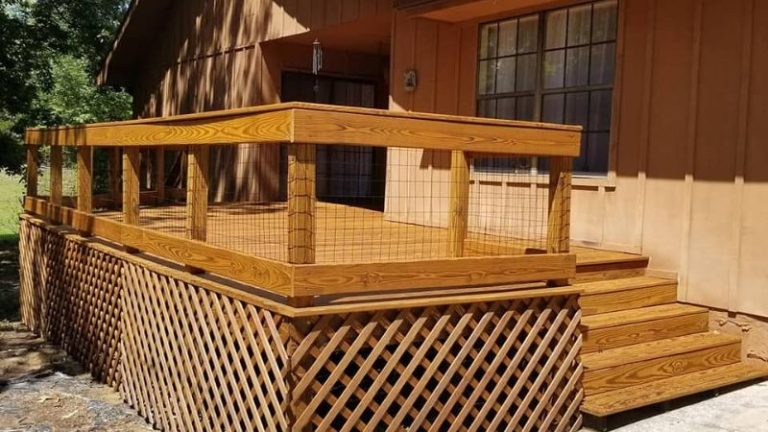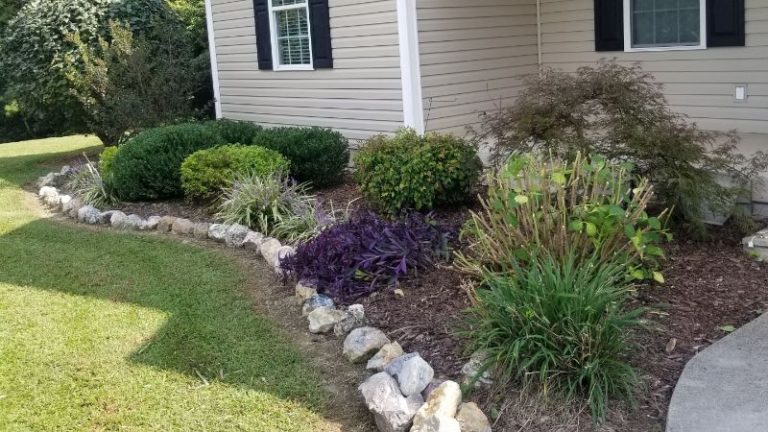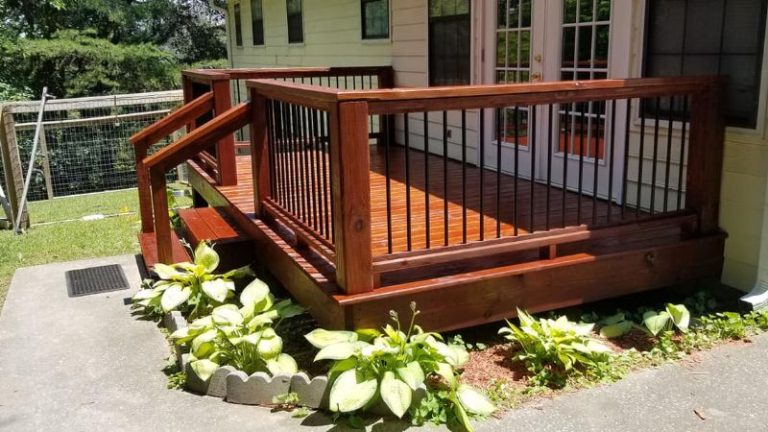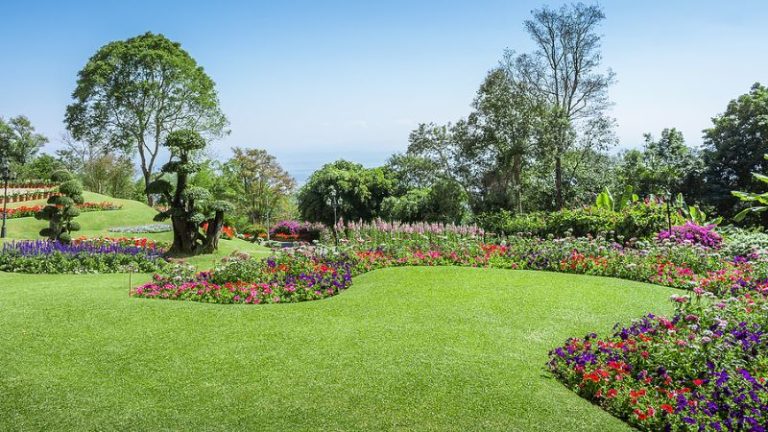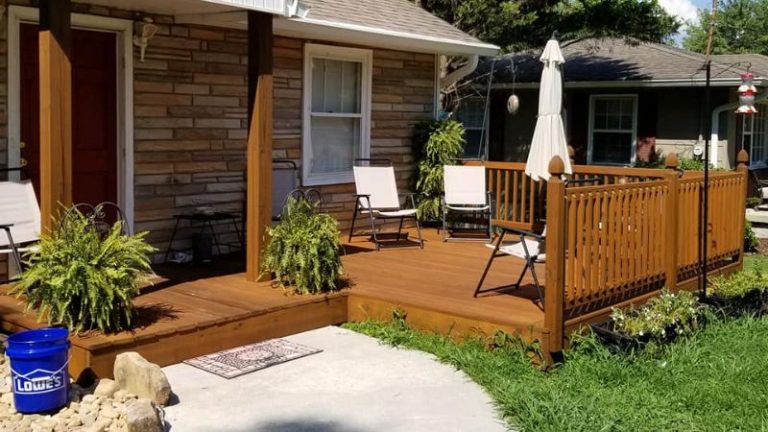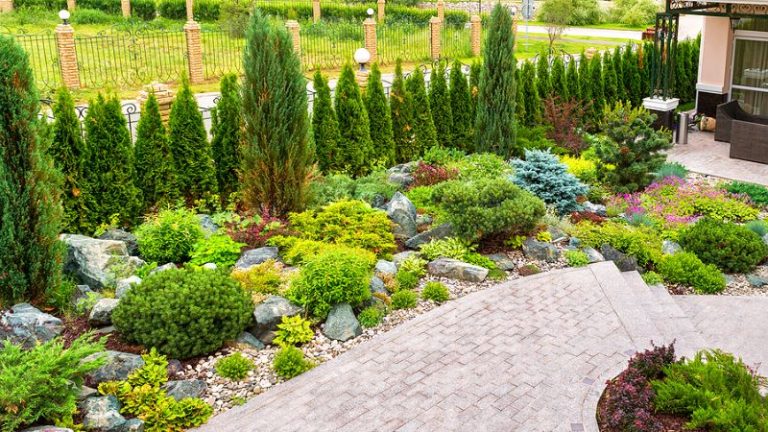10 Most Commonly Broken Rules That Produce Dysfunctional Landscapes
This is a list of the most common mistakes I see people make in designing their landscapes. Usually the mistakes are made either by a builder or a landscaper cutting corners to save money, or by homeowners who just aren’t aware, and haven’t fully thought their plan through. If you follow these rules, then you will be well on your way to creating a landscape which is a breeze and a joy to maintain. But, if you don’t, then keep in mind that maintaining a poorly designed landscape is like maintaining a pile of high interest debt. The cost of making the minimum payments of maintaining debt or a poorly landscaped yard add up very quickly and you’re always still left with the underlying problem. Do it right from the beginning. Just avoid the debt and the poorly designed yard altogether. The price you pay up front is more than putting in a cheaper less thought out landscape design; but, overtime it ends up being far cheaper due to less maintenance, and it’s prettier too.
The typical suburban lot has the potential to be a simple and easy place to maintain. There are just a few problems that are chronically ignored because it’s cheaper in the short-run to not address them. The builder isn’t going to address them because his job is to get the house built and on the market as quickly and cheaply as possible. The landscape need only to look decent from a distance to an unobservant passerby. And the landscaper isn’t going to do it. He’s just there to get the yard mowed as quick as possible so as to get to the next disheveled yard… unless of course he’s being paid to address that particular problem. And the homeowner, isn’t going to do it because they usually don’t have the money for it after paying for the mortgage and other maintenance and repair bills. So who does that leave? Only the audacious few. Perhaps you?
The 10 Unforgiveable Commandments Thou Shalt Follow Lest Thee Be Banished From Paradise:
- Plant trees in islands with other perennials. Do not plop them in the yard isolated and surrounded by grass.
- Make sure grassy areas are accessible to mowers.
- Minimize or eliminate areas that require weed-eating.
- Heavily shaded areas are not for grass.
- Do not plant woody plants too closely to buildings, fences, other structures, or each other.
- Use gravel for groundcover next to buildings and in areas where you do not want to build up the soil.
- Limb up trees and cut back overgrown hedges and forest edges to make them easy to mow around.
- Avoid accidentally creating “Leaf-Traps.”
- Use topsoil before sodding.
- Use sand to fill low spots and soggy areas.
1) Plant Trees In Islands With Other Perennials.
This one is broken All the time by homeowners. They come across a tree they like, they buy it, and plop it down seemingly almost completely randomly somewhere in the middle of their grassy Bermuda lawn. And then the tree rarely thrives. If they’re lucky, it’ll reluctantly survive and hate it’s life. And every time someone mows, they’ll get they’ll get annoyed when their easy mowing is interrupted by this delicate obstruction in their path. It slows them down and messes up their lines. And if it also happens to be on a hillside, then they’ll be really irritated because it’s that much harder to gracefully navigate a mower into doing circles on a hillside without sliding or the wheels spinning out. Next comes the weed-eater-man. If he’s experienced and cares about his job, he’ll take an inordinate amount of time carefully weed-eating around the tree doing his best not to cause damage. If he’s less experienced, or just simply doesn’t care, then he’ll weed-eat the shit out of the base of your little cute tree and the tree will then definitely never do well. If it manages to become a big tree, it won’t be a big tree for a long time because it’ll be rotting out at the base of the trunk where it’s been whipped by string trimmers.
The next reason this is a bad idea, is because trees and woody perennials do best in fungal-dominated soils, and grasses do best in bacterial-dominated soils. Grasses and annuals thrive in soil with lots of bacteria and they do their best to change the composition of the soil they’re living in to suit their needs, just as trees do the same with fungal dominated soils. When you plop a tree down in the middle of a large grassy area, it’s going to struggle because it will be living in bacterial-dominated soil, and it won’t be able to successfully alter the soil composition until it gets really big, at which point your grass is going to suffer and will peter out until you have mostly just bare dirt, tree roots, and some scraggly weeds. And the wind disturbance of a mower regularly driving over such an area all but insures that there will never be top soil there, it will just stay ugly hard dusty dirt. Neither the tree nor the grass will be at their best.
Trees do their best in islands with other tree friends to live with. Look at nature. How often do you see a little cute solitary tree growing in a vast expanse of grass? The only time you will see this, is when you are looking at the grasslands of a foolishly manicured lawn. It’s the only place in nature where this happens. Instead, what you see in wild nature is the following three scenarios. 1) A forest edge that meets a grassland which slowly year by year encroaches further in on the grassland like a very slow moving forest fire moving across the land. 2) A GROUP of trees in the middle of a grassland that is expanding year by year, moving outward in all directions into an ever larger group of trees and woody perennials. In this case, somehow a woody plant managed to get started in the grassland, probably something that is less of a tree and more of a shrub like a Privet, and then this woody species gave shelter for other woody species to take root and they worked together to create their own island. 3) Really big solitary trees in the middle of a grassland. Big trees can hold their own in grasslands because they’re big enough to alter the soil biology on their own, and their roots run much deeper than the more surface level grasses allowing them to occupy different levels of the ground. You might be wondering how a solitary tree ends up in the middle of a grassland if they don’t start off growing well in grasslands when they’re young. One of two scenarios could’ve happened. 1) the area was a forest, but then the forest was cut down and turned into grassland but the big trees were not cut down but rather saved for their beauty, shade, or some other purpose. 2) it was part of an expanding island in the middle of a grassland, but then someone came along and cleaned up the island but once again saved the big pretty trees. Regardless, smaller trees belong to forests and islands. If you want trees in your yard but don’t want a forest, PUT YOUR TREES IN ISLANDS WITH OTHER TREES AND/OR WOODY SPECIES.
2) Make Sure Grassy Areas Are Accessible To Mowers.
This one seems obvious, but it’s not an uncommon mistake. The better this rule is observed, the quicker a yard can be mowed with less weed-eating and less push mowing, which means less cost of maintenance. The cost of weed-eating adds up Fast. A mower is easily ten to a hundred times faster than weed-eating. Eliminate weed-eating as much as possible. Round out where islands and beds meet hard boundaries such as fences and buildings. When edges are not rounded out (not in), then they leave little corner bits that are too narrow for mower decks to mow which makes for more weed-eating. Also, make sure any narrow grass strips or pathways are at least wide enough for a ride-on mower to get through so that the little push mower doesn’t have to be used. Avoid putting grass on banks that are too steep for mowers to mow, otherwise they’ll have to be weed-eated. With the time it takes to weed-eat such banks, you’d be better off in the long run, spending the extra money up front to hardscape the bank, ie, cover with large rock or terrace, or make it a little forest area and let the trees and shrubs hold the hillside. The same goes for steep ditches. If the ditch is cannot be maintained with a mower, either because it’s too steep or uneven, or oftentimes too wet, then you’re better off covering it up with stone instead. Make sure all fences have at least one 48″ or wider gate to let a decent sized mower through. Do not mistakenly cordon off an area of the yard which makes access with a mower difficult. For instance if you’re putting in a dry creek-bed, a raised hardscaped pathway, or something else which could potentially section off an area of the yard, then make sure a mower still has a convenient pathway through or around to access the other side.
3) Minimize or eliminate areas that require weed-eating.
This one follows in the same vain as rule number 2. If possible avoid using welded wire and woven wire fencing. Chain link isn’t quite as bad. But if you do use any of these types of fencing, if you can keep the wire a couple inches off the ground, then that gives the ability to keep the trimmer string under the wire when trimming which makes for quicker and easier maintenance of fence-line. If the wire is placed on the ground, then oftentimes, spraying the fence-lines with herbicide makes the most sense. I’m not a big fan of herbicides, but this is a situation where I do use it. Most people don’t want to spend the money it takes to weed-eat, so herbicides become the cheaper workaround. Another place I use herbicide is alongside buildings which can be damaged with string trimmers and underneath decks that are too low to be accessed by trimmers. A way to reduce the need for herbicides in these situations is to put in something other than grass right next to buildings. Gravel is always a good idea. this eliminates the need for weed-eating, reduces the use of herbicides, and increases the speed with which a property can be maintained. It’s also better than mulch, as mulch breaks down into soil, and supports more bug life, none of which you want right up on a building. Keep your trees and perennials in islands as stated in rule 1. Follow everything in rule 2. And continue keeping an eye out for ways to reduce weed-eating. before you put that yard ornament, bird-feeder-on-a-post, sign or other mowing obstruction out into the yard, ask yourself if there is somewhere else that it could go instead, such as in an island, garden bed, or on an edge, rather than in the middle of the grass.
4) Heavily Shaded Areas Are Not For Grass.
Grasses rarely do well in heavily shaded areas. There are two exceptions to this. 1) native prairies. Prairies have not been destroyed by heavy earth moving equipment. They still have deep native soils with lots and lots of carbon/organic matter. They are polycultures, not monocrops of Bermuda or Fescue. They contain many diverse species of clovers, non-woody perennials, grasses, sedges, and forbs. This plethora of species along with the healthy native soils work together to sustain together in shady environments where monocrops of Bermuda or Fescue would not otherwise do well. Our cities and suburbs do not have native soils. They were bulldozed away when they leveled the trees to install our subdivisions. Secondly, people usually consider polycultures to be “weedy” and undesirable. The second exception, of where you’ll find grass growing in shady areas, is when you have a homeowner who is willing to spend a LOT of money every year maintaining something which is not naturally occurring. The grasses that can do well in shade, do not have runners. They produce seed and they replenish themselves with seed. Normally you would find them in nature alongside with lots of other species, which people call weeds, and along with native soils, and with lots of moisture. But our suburbs have no native soils. And without the native soils, we usually don’t have the moisture because it’s the soils that hold the moisture. Our water runs off and away to the sewers with our compacted clay. So sprinkler systems are installed to keep the grass watered frequently. Next the “weeds” are exterminated with broad-leaf herbicides. The grass is mowed regularly, which means the grass never gets to re-seed. So the yard is instead also aerated and re-seeded every spring and fall. And throughout the year it is sprayed with nitrogen to make up for the lack of native soils. All of this costs a lot of money. If you’d rather not spend a lot of money, don’t expect to have grass in heavily shaded areas. Instead, make islands, garden beds, hardscape, or, remove the trees before trying to get grass to grow.
5) Do Not Plant Woody Plants Too Closely To Buildings, Fences, Other Structures, Or Each Other.
This one happens all the time too. Builders, homeowners, and inexperienced landscapers all do this. When that new bush and tree is being planted, it is little, and little plants look unnaturally widely spaced out when planted a proper distance apart. People want to fill the voids, so they often put the cart before the horse and plant too many plants too close together, rather than seeing past the voids and accepting that the plants will get big and fill in the empty space over time. Plant them the proper distance apart and have patience. When planting them next to a building, fence, or other immovable structure, make sure that they’re planted far enough away from the structure to give easy access between the fully grown plant and the structure. If they are hedges which will need to be trimmed, make sure there will be enough space behind them to access with a hedge trimmer and leaf blower. Otherwise, maintenance will be difficult to deal with. Consider too, the maintenance of anything else that is there as well, such as any part of the structure that requires regular maintenance such as gutter cleaning. Will there be enough space to set your ladder down when it’s time to clean gutters? If no, you’re making more work for yourself.
6) Use Gravel And Quality Landscape Fabric For Groundcover Next To Buildings And In Areas Where You Do Not Want To Build Up The Soil.
As a gardener, deep and rich soils are lovely. As a builder, soils are out to destroy your creations. They harbor moisture, fungal life, bacterial growth, and bug life, including carpenter ants, beetles, and worst of all termites. Unless your house is made of stone, do not build soils next to your buildings. Put rock buffers around your structures instead. And with regards to other areas in your yard. If you have garden beds or islands, there are two basic approaches. Either you are building soil, or, you are maintaining an aesthetic curb-appeal typical of most suburbs. If you are building soil, then your yard will have a more wild look to it (my preference). And you will be doing such things as putting down mulch once or twice a year and letting it degrade into soil, and/or you will be growing living groundcovers such as Creeping Jenny or Ajuga, and the groundcover will also be building soil. This is great as better soils make for happier plants. The compromise is, it takes more time because better soils also grow more weeds, so you will have to spend time weeding and gardening to fill the space that weeds would otherwise occupy. The other option, is you are not building soil and are simply maintaining that certain kind of typical suburb aesthetic. This is usually what most people are doing, except they’re doing it wrong. I am not a big fan of landscape fabric, but they have their place. Most people fail to use landscape fabric in the area’s where they are not intending to build soil and they end up fighting weeds. Usually that means they spend a lot of time on their hands and knees hand-pulling, or they resort to herbicides, which negatively impacts the other nearby ornamental plants as well. Or the weeds just don’t get dealt with and they end up with a very weedy bed. The solution is the best landscape fabric you can find. I have never once in my life seen a quality landscape fabric in a box store like Home Depot or Pikes. You have to order it from online. Get the thickest stuff you can find and make sure it’s a kind that is readily permeable to water. And then use gravel for your groundcover, if it’s an area where gravel would look good. If a mulch would look better then use mulch. Just bear in mind, mulch needs to be removed and replenished on an annual basis, whereas, gravel is a once and done option. The reason for removing the mulch is because you don’t want to build soil on top of your landscape fabric as that would give weeds an easy place to grow and defeats the purpose of the fabric. And one last tip, DO NOT use bark mulch if you ever have any significant amount of water puddle or flow through the area. Bark mulch is light and floats. When it rains, it’ll wash away. And if you try to blow leaves out of it, the mulch will blow away too.
7) Limb Up Trees And Cut Back Overgrown Hedges And Forest Edges To Make Them Easy To Mow Around.
This one is very straight-forward. The goal is simply to make it easier and quicker to mow. When tree limbs are low, and when a forest edge has encroached over grass, it takes longer to mow because the mower no longer fits under the tree branches and you end up having to go forward and backward over and over all the way around a tree or down a forest edge to work the mower deck in and out of the low hanging branches. Also, getting snagged by thorns, is never fun, and thorns commonly grow on forest edges. Save yourself the headache, and once a year limb up the trees and cut back that creeping forest edge.
8) Avoid Inadvertently Creating “Leaf-Traps.”
Leaf-traps are areas where leaves always gather in the fall. The wind blows and the leaves easily funnel into a location, but can’t be easily blown out, so they just gather and collect. If you don’t have any big deciduous trees around then this one doesn’t apply to you. But if you do have lots of leaves in the fall, then this one is important but almost always overlooked. If you are sectioning off a small area, make sure your leave a space open that is large enough to leaf blow leaves out of the area. For instance, a large gate perpendicular to a stretch of privacy fence makes it such that the leaves can be blown down the stretch of fence and out through the gate into a larger open area where the leaves can be quickly removed by a bagging mower. Or if you put in a small courtyard area with a stone perimeter wall, make sure the leaves have an easy way out. Do your best to round out corners. Wherever possible, avoid tight 90-degree inside corners on walls, and avoid lots of little tight spaces where leaves can get trapped and difficult to be blown out. Where a tight inside corner is unavoidable, make the ground something hard, such as gravel, pavers, or stone, not mulch or pine-straw. That way the blower won’t blow away your ground-cover when it’s time to blow out the leaves. Not a whole lot to say on this one. Just remember to think of the leaves and whether or not you’re creating extra work for yourself come fall.
9) Use Topsoil Before Sodding.
Builders are the worst culprits of cutting corners and throwing down the shittiest sod you’ve ever seen. If you are putting down sod, do it right. Skipping out on the topsoil creates the shitty dust bowl yards we all hate, and once done, it can’t be fixed without completely starting over. Put down at least an or two of quality topsoil before you sod. The more and the better the topsoil the better. If you skip this step, and if the ground is the typical compacted Georgia red clay, then the grass will NEVER do good. All the spraying in the world will only make it look good from a distance. But walk across it and you’ll be able to see bare earth and the sod struggling to sink roots into the hard ground. Absent the topsoil, every time a mower passes over, it’ll suck up and spit into the atmosphere the little bit of topsoil that has been generated from decomposing grass clippings. The roots need good soil to grow nice and thick. Do Not be a cheapskate. Put down topsoil before you sod.
10) Use Sand To Fill Low Spots And Soggy Areas.
This last one is more of a maintenance tip than a design principle. River sand can work wonders in areas that are chronically boggy. It gives grass roots a place to take root, but it allows water to drain away. The key here is, the water has to have somewhere to go. Sometimes just raising the ground a few inches is enough, but sometimes you might need to take more significant measures by putting in a French-drain or something to more actively direct the water somewhere. Sand is also the best option to fill in those little potholes and sinkholes in the yard. Whether it’s a hole that the dog dug, or a sinkhole from a rotted-out tree stump, sand will sink down into all the little crevices far better than soil, and it’ll self level over time. Grass can also come up through it far more easily than it can through topsoil, so it’ll be lush and green more quickly than if you use topsoil. Sand is not as well suited as a base layer for sod though because it lacks any organic matter. Though it can be used as a base for sod, it is usually best used for small holes, sinkholes, and bogs.
And that’s it! Observe these rules and your kingdom will be easy to rule.
